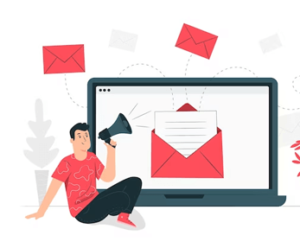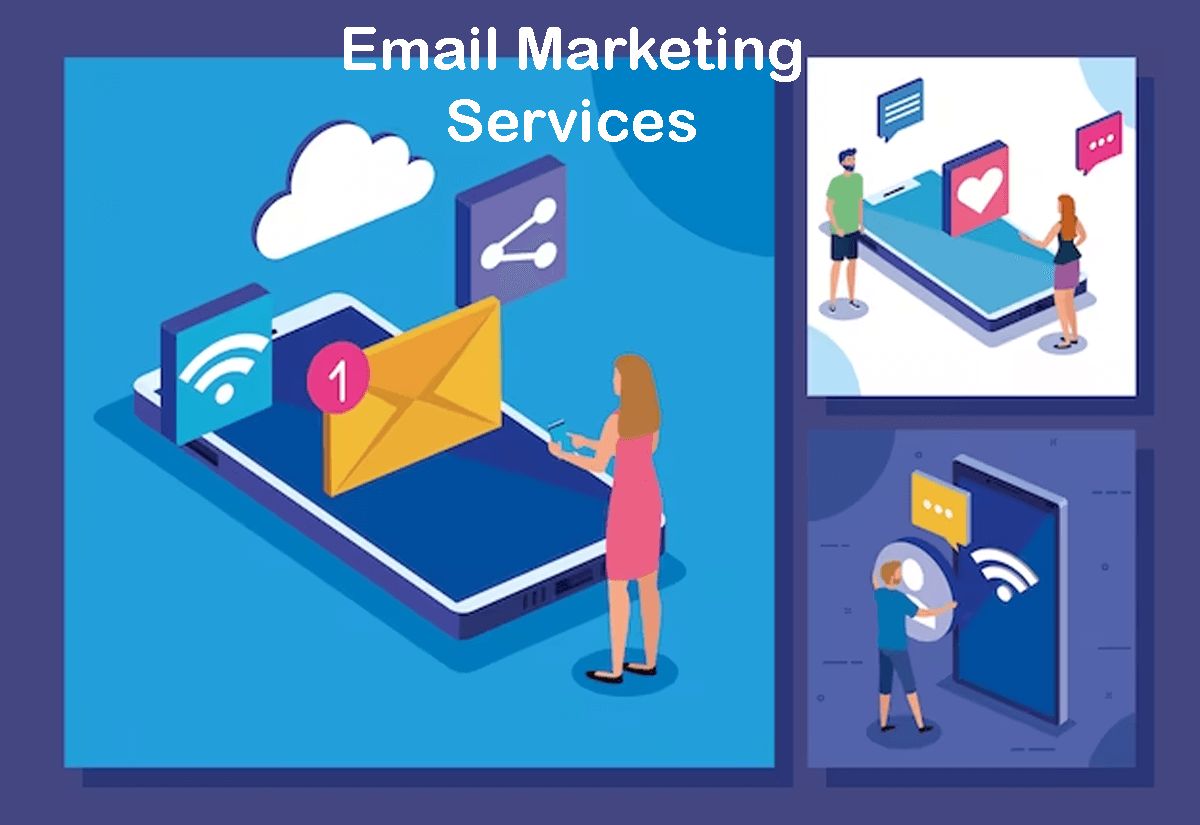What's Inside?
An Email Marketing Service (ESP) is a software platform that enables businesses and organizations to create, manage, and send email campaigns to a targeted audience. ESPs are designed to simplify the process of email marketing by providing a user-friendly interface and a range of tools to help marketers create effective email campaigns.
Some common features of an ESP include:
- Email template design: ESPs provide pre-built email templates that can be customized with your own branding and messaging.
- List management: ESPs allow you to manage your email contact list, segment your audience, and automate your email campaigns.
- Campaign tracking and reporting: ESPs provide analytics and reporting features that allow you to track the performance of your email campaigns and optimize your marketing efforts.
- Integration with other marketing tools: ESPs often integrate with other marketing tools, such as CRM systems, social media platforms, and landing page builders.
By using an ESP, businesses can create personalized and targeted email campaigns that help build relationships with customers and drive sales. Additionally, ESPs typically provide tools for managing subscriber lists, ensuring compliance with email regulations, and monitoring email deliverability.
Email services
Email services are online platforms that allow users to send, receive, and manage electronic messages, or emails, over the internet. These services typically provide users with an email address, consisting of a username and a domain name, which they can use to communicate with other email users.
Email services offer various features such as inbox organization, spam filtering, attachment support, and advanced search options to help users manage their messages effectively. They also often provide additional features such as calendars, task lists, and contact lists to assist with productivity and organization.
Email services can be accessed through web browsers or dedicated email applications on desktop and mobile devices. Some of the most popular email services include Gmail, Outlook, Yahoo Mail, and ProtonMail, among others.
What Is Drip Marketing?
 Drip marketing is a marketing strategy that involves sending a series of automated, pre-written messages to prospects or customers over a period of time. The messages are typically sent via email, but can also be sent through other channels such as SMS, social media, or direct mail.
Drip marketing is a marketing strategy that involves sending a series of automated, pre-written messages to prospects or customers over a period of time. The messages are typically sent via email, but can also be sent through other channels such as SMS, social media, or direct mail.
The purpose of drip marketing is to keep prospects and customers engaged with a brand over time, and to provide them with relevant and useful content that helps move them towards a purchase decision. Drip marketing campaigns are often triggered by specific actions, such as signing up for a newsletter, downloading a whitepaper, or making a purchase.
One of the benefits of drip marketing is that it allows businesses to nurture leads and build relationships with customers over time, without requiring a lot of manual effort. By automating the process of sending targeted messages to prospects and customers, businesses can stay top of mind and increase the likelihood of converting leads into customers.
Another advantage of drip marketing is that it allows businesses to provide personalized content based on a prospect’s behavior and interests. For example, if a prospect downloads a whitepaper on a specific topic, the drip marketing campaign can be customized to send them additional content on that same topic, helping to build trust and authority with the prospect.
Drip marketing is a powerful marketing strategy that can help businesses stay engaged with prospects and customers, build relationships over time, and ultimately drive more sales and revenue.
eCommerce Email Marketing Services
There are many Email Marketing Services (EMS) that are specifically designed for eCommerce businesses. Here are some popular options:
- Klaviyo: Klaviyo is a popular EMS that is tailored for eCommerce businesses. It integrates with popular eCommerce platforms such as Shopify, Magento, and WooCommerce, and provides a range of features such as email automation, segmentation, and A/B testing.
- Omnisend: Omnisend is another EMS designed for eCommerce businesses. It includes features such as automation workflows, segmentation, and cart recovery emails. It also supports multiple channels such as email, SMS, push notifications, and social media ads.
- Mailchimp: Mailchimp is a popular EMS that is suitable for eCommerce businesses of all sizes. It offers a range of features such as email automation, segmentation, and A/B testing. It also integrates with popular eCommerce platforms such as Shopify and WooCommerce.
- Campaign Monitor: Campaign Monitor is an EMS that is suitable for businesses of all sizes. It provides features such as automation workflows, segmentation, and A/B testing. It also offers integrations with popular eCommerce platforms such as Magento and Shopify.
- Drip: Drip is an EMS designed for eCommerce businesses. It provides features such as automation workflows, segmentation, and A/B testing. It also includes advanced features such as visual workflows and machine learning to personalize email content based on customer behavior.
These are just a few examples of the many EMS options available for eCommerce businesses. When choosing an EMS, it’s important to consider factors such as ease of use, integrations, pricing, and customer support to find the best fit for your business.
How Do I Pick the Best Emailing Services?
Choosing the best Email Marketing Service (EMS) for your business can be challenging, but here are some factors to consider when making your decision:
- Features: Look for an EMS that offers the features you need for your email marketing campaigns. Some common features include email templates, automation workflows, segmentation, A/B testing, and analytics.
- Integrations: Consider the EMS’s ability to integrate with other tools and platforms that you use, such as your CRM system, social media accounts, or eCommerce platform.
- Ease of use: Choose an EMS that has an intuitive user interface and is easy to set up and use. This is especially important if you don’t have a dedicated marketing team.
- Scalability: Make sure the EMS can accommodate the size of your email list and is scalable as your business grows.
- Deliverability: Look for an EMS that has a good reputation for email deliverability and provides tools to help you optimize your campaigns for maximum deliverability.
- Customer support: Choose an EMS that offers good customer support, including access to a knowledge base, tutorials, and responsive customer service.
- Pricing: Consider the cost of the EMS and how it fits within your budget. Many EMSs offer a range of pricing plans, so make sure you choose one that provides the features you need at a price you can afford.
By considering these factors and evaluating multiple EMSs, you can find the one that best fits your business needs and helps you achieve your email marketing goals.
Why Choosing The Best Email Marketing Service is Important?
Choosing the best Email Marketing Service (EMS) is important for several reasons:
- Email marketing is a critical component of modern marketing: Email marketing is a cost-effective way to reach your audience and build relationships with your customers. Choosing the best EMS will help you create effective email campaigns that drive results.
- Features: An EMS with advanced features such as automation workflows, segmentation, and A/B testing can help you create more targeted and effective email campaigns. These features can save you time and resources while helping you achieve better results.
- Deliverability: A reputable EMS will have a good reputation for email deliverability. This means your emails are more likely to reach your audience’s inbox and avoid being marked as spam.
- Compliance: Email marketing is regulated by laws such as the CAN-SPAM Act in the United States and the GDPR in the European Union. A good EMS will help you comply with these regulations by providing features such as unsubscribe links and opt-in forms.
- Data analytics: An EMS with robust data analytics can help you track and analyze your email campaigns’ performance. This data can help you refine your campaigns and make data-driven decisions about your email marketing strategy.
Choosing the best EMS is important because it can help you create effective email campaigns, reach your audience more effectively, and achieve better results from your email marketing efforts.
Email Marketing Platform
 An Email Marketing Platform (EMP) is a software platform that businesses use to create, send, and manage email marketing campaigns. These platforms typically include a range of features such as email templates, automation workflows, segmentation, A/B testing, and analytics.
An Email Marketing Platform (EMP) is a software platform that businesses use to create, send, and manage email marketing campaigns. These platforms typically include a range of features such as email templates, automation workflows, segmentation, A/B testing, and analytics.
Here are some popular Email Marketing Platforms:
- Mailchimp: Mailchimp is a popular EMP that offers a range of features for businesses of all sizes. It includes email templates, automation workflows, segmentation, and A/B testing. Mailchimp also offers integrations with other tools and platforms such as Shopify and WordPress.
- Constant Contact: Constant Contact is another popular EMP that provides features such as email templates, automation workflows, segmentation, and A/B testing. It also offers a variety of integrations, including with popular eCommerce platforms like Shopify.
- Campaign Monitor: Campaign Monitor is an EMP designed for businesses of all sizes. It includes features such as automation workflows, segmentation, and A/B testing. Campaign Monitor also offers integrations with popular eCommerce platforms such as Magento and Shopify.
- HubSpot: HubSpot is a comprehensive marketing platform that includes email marketing features as well as other marketing tools such as social media management and lead generation. Its email marketing features include automation workflows, segmentation, and A/B testing.
- Sendinblue: Sendinblue is an EMP that provides features such as email templates, automation workflows, segmentation, and A/B testing. It also includes SMS marketing capabilities and offers integrations with popular eCommerce platforms such as WooCommerce and Magento.
These are just a few examples of the many Email Marketing Platforms available to businesses. When choosing an EMP, it’s important to consider factors such as ease of use, integrations, pricing, and customer support to find the best fit for your business.
Why Does Email Marketing Matter?
Email marketing has an exceptional return on investment (ROI) compared to other marketing channels. Despite its decades-long existence, it still yields a potential ROI of 4200% – that is, for every $1 spent on email marketing, you can potentially earn $42 in return. Some reports even estimate the ROI to be as high as 54%! This shouldn’t come as a surprise, given that there are around 4 billion email users worldwide (according to Statista), spread across different demographics. Email marketing not only provides a great ROI but also helps you reach a larger audience, increase your sales, and improve brand recognition.
Regardless of your industry, email marketing can help you communicate your marketing message to the right people and stay connected with your target audience even after they’ve left your website. Here are a few more reasons why email marketing is essential for your brand:
- Loyalty: Email gives you the opportunity to bring website visitors back to your site repeatedly. People who visit your website repeatedly are more likely to become customers than those who only visit it once.
- Returning visitors: A vast majority of website visitors – about 97% – never return. By building an email list, you can encourage repeat visitors, thereby boosting loyalty.
- Increased revenue: Email marketing has excellent conversion rates. Barilliance reports that the average conversion rates for email marketing in 2020 were 15.11%. Additionally, purchases resulting from email marketing campaigns tend to be larger.
What Should Email Marketing Platforms Do?
When selecting an email marketing platform, it’s crucial to choose one that simplifies your life by streamlining your email marketing and automating your campaigns. You’ll also want to ensure that the platform provides the necessary features to create visually appealing and engaging emails for your customers and subscribers. Here are the six key features to look for in an email marketing platform:
1. User Interface
An email marketing platform should have a user-friendly interface that is easy to navigate, learn, and utilize. A drag-and-drop editor is a great feature to have, and if you don’t have access to email designers, make sure the platform offers customizable templates that align with your brand.
2. Segmentation
By segmenting your email list, you can create personalized and targeted marketing campaigns that lead to a better ROI. Find an email marketing platform that uses AI and machine learning to evaluate user behavior and fine-tune your email campaigns in real-time.
3. Personalization
Personalizing your emails increases engagement rates. The email marketing platform you choose should offer merge tags that make it easy to personalize your email copy and subject lines. Some platforms even allow for dynamic content, allowing you to send a single email with different content depending on the segment of the audience.
4. Automation
Email marketing involves many manual, repetitive tasks, but many email marketing platforms include automation features that can help you save time. These features include email scheduling, delivery receipts, engagement tracking, text analytics, role-based account access, and even intelligent segmentation.
5. Testing
A/B and split testing functionality is essential to ensure that your email marketing campaigns generate the best ROI possible. Choose a platform that allows you to test different elements of your emails against each other, such as subject lines, copy, calls-to-action, email design, and format.
6. Reports and Analytics
To track your email marketing performance, you need access to reporting and analytics. Choose a platform that provides data on open rates, click-through rates, bounce rates, and other key email marketing benchmarks to help you optimize your campaigns.
Which Platform Should You Choose?
Choosing an email marketing platform depends on your specific needs and budget. Consider the six features mentioned in the article: user interface, segmentation, personalization, automation, testing, and reports/analytics. Evaluate how important each of these features is for your email marketing goals and choose a platform that provides the best combination of features for your business.
You can also consider factors such as pricing, customer support, integrations with other tools you use, and user reviews. Research and compare different platforms to find one that meets your needs and budget while providing the features and support you require to achieve your email marketing goals.
Free Email Marketing
 Free email marketing refers to using an email marketing service that is offered at no cost, typically with limited features and functionality. Some email marketing platforms provide a free plan or trial period, which allows businesses to send a certain number of emails or have a limited number of subscribers without paying a fee. However, free plans may also come with limitations such as fewer templates, restricted reporting, and limited automation capabilities. While free email marketing can be a good starting point for small businesses, it may not be the most effective long-term solution as businesses grow and require more advanced features and customization options.
Free email marketing refers to using an email marketing service that is offered at no cost, typically with limited features and functionality. Some email marketing platforms provide a free plan or trial period, which allows businesses to send a certain number of emails or have a limited number of subscribers without paying a fee. However, free plans may also come with limitations such as fewer templates, restricted reporting, and limited automation capabilities. While free email marketing can be a good starting point for small businesses, it may not be the most effective long-term solution as businesses grow and require more advanced features and customization options.
Best free email marketing services
There are several free email marketing apps available, each with its own set of features and limitations. Here are some of the best free email marketing apps:
- Mailchimp – Mailchimp is a popular email marketing platform that offers a free plan with basic features, including email templates, audience segmentation, and marketing automation. However, the free plan is limited to 2,000 subscribers and 10,000 email sends per month.
- Sendinblue – Sendinblue offers a free plan with basic email marketing features, including email templates, segmentation, and automation. The free plan is limited to 300 emails per day, and you can only store up to 2,000 contacts.
- HubSpot – HubSpot offers a free email marketing tool as part of its free CRM software. The tool includes basic email marketing features like email templates, segmentation, and automation. However, the free plan is limited to 2,000 email sends per month and 5 email templates.
- Benchmark – Benchmark offers a free plan with basic email marketing features like email templates, automation, and segmentation. The free plan is limited to 250 emails per month, and you can only store up to 2,000 contacts.
- Moosend – Moosend offers a free plan with basic email marketing features, including email templates, automation, and segmentation. The free plan is limited to 1,000 subscribers and unlimited email sends.
It’s important to note that while these apps offer free plans, they may come with certain limitations, such as the number of subscribers or email sends you can have. Additionally, some features may only be available in paid plans. It’s important to evaluate your needs and choose an app that best fits your requirements.
What makes the best free email marketing service?
The best free email marketing service is one that provides a variety of useful features while still being free of charge. Some key features to look for in a free email marketing service include:
- Contact list management: The ability to easily manage your email list and segment it into different groups based on demographics or other criteria.
- Email templates: A library of pre-designed email templates that you can customize to match your brand and message.
- Drag-and-drop email editor: A user-friendly email editor that allows you to create professional-looking emails without any coding knowledge.
- Automated campaigns: The ability to set up automated email campaigns triggered by certain actions, such as a new subscriber or a recent purchase.
- Reporting and analytics: Detailed reports on the performance of your email campaigns, including open rates, click-through rates, and other key metrics.
- Integration with other tools: Integration with other marketing tools, such as social media platforms or e-commerce platforms, to streamline your marketing efforts.
- Deliverability: The ability to deliver emails to the inbox rather than spam folder.
It’s important to note that while some email marketing services offer free plans, they may come with limitations, such as a cap on the number of subscribers or emails you can send. Therefore, it’s important to assess your needs and goals before selecting a free email marketing service.
What You Get with the Free Version + Limitations
The features and limitations of the free version of an email marketing service will vary depending on the provider. However, here are some common features and limitations you may expect with a free email marketing service:
Features:
- Email templates: You can choose from a selection of pre-designed email templates to customize and use for your campaigns.
- Contact management: You can store and manage a list of subscribers and their contact information.
- Email scheduling: You can schedule your emails to be sent at a specific time and date.
- Basic reporting: You can track open rates, click-through rates, and unsubscribe rates of your emails.
Limitations:
- Email sending limits: Free plans usually have a limit on the number of emails you can send per month or per day.
- Subscriber limits: Free plans often limit the number of subscribers you can have on your email list.
- Branding: Some free plans require the email marketing service’s branding to be included in your emails.
- Limited features: Free plans usually have fewer features and functionalities compared to paid plans.
- Support: Free plans may have limited or no access to customer support.
It’s important to carefully review the features and limitations of any free email marketing service you’re considering to determine if it meets your needs and aligns with your marketing goals.
What Do You Get If You Pay?
 Paying for an email marketing service usually unlocks additional features and benefits beyond what is available with the free version. These features typically include:
Paying for an email marketing service usually unlocks additional features and benefits beyond what is available with the free version. These features typically include:
- Increased sending limits: With a paid plan, you’ll often be able to send more emails per month or per day than you would with the free version.
- Advanced automation and personalization features: Paid plans often include more robust automation and personalization features, such as behavioral triggers, advanced segmentation, and dynamic content.
- Access to more templates and design tools: Paid plans often come with more options for email templates, as well as advanced design tools that allow you to customize your emails to a greater extent.
- Better support: With a paid plan, you’ll typically have access to better customer support, including live chat or phone support, as well as priority support for urgent issues.
- Advanced analytics and reporting: Paid plans often include more detailed analytics and reporting features, which allow you to track your email campaign performance more closely and make data-driven decisions about how to improve your campaigns.
- Integration with other tools and platforms: Many paid email marketing services offer integrations with other marketing tools and platforms, such as CRM software, social media management tools, and e-commerce platforms.
The specific features and benefits offered with a paid plan can vary widely depending on the email marketing service you choose. Be sure to carefully review the features and pricing of each service before making a decision.
When Should You Upgrade?
It’s important to consider upgrading to a paid plan when you have outgrown the limitations of the free version of your email marketing app. Here are some signs that it might be time to upgrade:
- You have a growing email list: Many email marketing apps limit the number of subscribers you can have on your list with the free version. If your list is growing and approaching the limit, it’s time to consider upgrading.
- You need more features: Free email marketing apps typically offer basic features. If you need more advanced features such as automation, advanced analytics, or integrations with other tools, upgrading to a paid plan may be necessary.
- You want to remove branding: Some free email marketing apps add their branding to your emails, which can make your messages appear less professional. If you want to remove the branding and have more control over the look and feel of your emails, upgrading to a paid plan is the way to go.
- You want more support: Free plans often offer limited support options. If you want access to more personalized support, it may be worth upgrading to a paid plan.
- You want to send more emails: Many free email marketing apps limit the number of emails you can send per month. If you need to send more emails to your subscribers, upgrading to a paid plan may be necessary.
It’s up to you to determine when the time is right to upgrade to a paid email marketing plan. Consider your needs and goals, and weigh the benefits of upgrading against the cost of the plan.
Which Free Email Marketing Solution Should You Choose?
The choice of a free email marketing solution ultimately depends on your specific needs and goals. Each platform has its own strengths and limitations, so it’s essential to evaluate them based on the features that matter most to you.
If you’re a small business or a freelancer, Mailchimp’s Forever Free plan is a great place to start. It offers many of the features you’ll need, such as email templates, segmentation, and basic automation, and allows you to send up to 10,000 emails per month to up to 2,000 subscribers.
If you need more advanced automation features, such as conditional workflows and advanced reporting, then consider upgrading to a paid plan with Mailchimp or looking at other options like Sendinblue, which offers a free plan with more advanced automation features and the ability to send up to 300 emails per day.
If you’re looking for a more straightforward and intuitive platform, then consider using Benchmark, which offers an easy-to-use drag-and-drop email editor and access to a large library of email templates. Its free plan allows you to send up to 250 emails per month to up to 2,000 subscribers.
It’s essential to evaluate your specific needs and goals to determine which free email marketing solution is right for you. Take advantage of free trials and test different platforms to see which one feels the most intuitive and provides the features you need to succeed.
Email Marketing Services FAQs
- Increased website traffic: A well-crafted email campaign with engaging content and a clear call-to-action can drive traffic to your website, which can positively impact your SEO.
- Social media engagement: Email marketing campaigns can help increase engagement on social media platforms. When your subscribers share your content on social media, it can increase brand visibility, leading to more website visits and improved SEO.
- Backlinks: When your subscribers share your content on their own websites or blogs, it can lead to backlinks to your website. Backlinks from reputable sources can improve your website's SEO.
- Newsletters: Regular updates about your company or industry news sent to subscribers.
- Promotional Emails: Emails that advertise a product or service with a call-to-action to make a purchase.
- Welcome Emails: Sent to new subscribers to introduce them to your company and encourage them to engage with your content.
- Cart Abandonment Emails: Sent to customers who have added items to their cart but didn't complete the purchase, with the aim of bringing them back to complete the purchase.
- Re-engagement Emails: Sent to subscribers who have become inactive, with the aim of encouraging them to re-engage with your content.
- Event Invitation Emails: Sent to invite subscribers to attend an upcoming event or webinar.
- Feedback or Survey Emails: Sent to solicit feedback or opinions from subscribers to improve products or services.
- Milestone Emails: Sent to celebrate a subscriber's birthday or anniversary with your company, or to celebrate a company milestone.
- Social Media Emails: Emails that encourage subscribers to follow your company on social media or to share your content on their own social media platforms.


